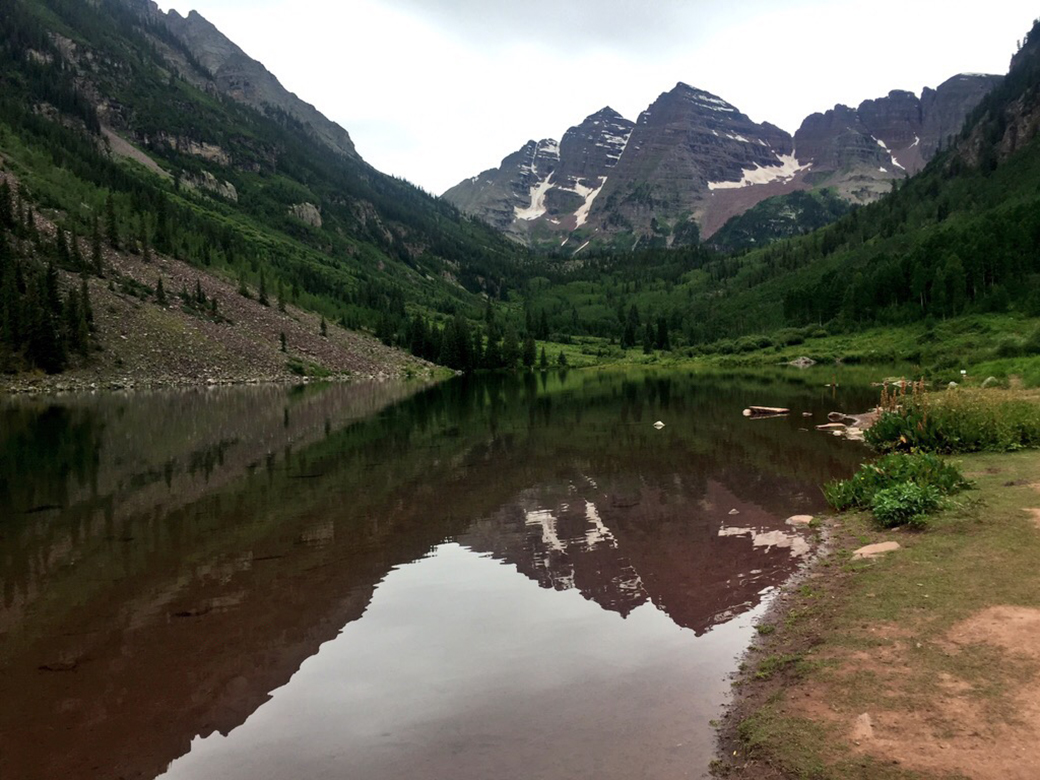
A reflection on Rocky Mountain National Park during National Parks Week
As the centennial celebration of the National Parks Service is coming up, and with this year’s National Parks Week starting April 16, I’m reminded of my incredible camping trip in the Rocky Mountain National Park last summer.
These parks are preserved land for wildlife to roam and native wild plants to grow along side beautiful scenery like mountains, forests and lakes. They are camped in and visited often, but no one is allowed to settle or take away any resources the parks have.
The Rocky Mountain National Park passes through seven U.S. states, stretching across almost 3,000 miles of land. The most recognizable state the Rockies settle in is Colorado. Colorado’s Rockies contain beauties like Independence Pass and the Maroon Bells — both of which I was able to experience on my trip.
My favorite adventure during that trip was when we went to see the Maroon Bells, which are by Aspen, C.O. The Bells are some of the most photographed mountains in the Rockies.
As soon as I stepped off the bus, I was able to see the snowcapped Maroon Bells, which are maroon due to the high levels of iron in the rock that’s turned rusty when the weather changes.
They sit like royalty above a beautiful lake that was so clear it mirrored the tree line perfectly, and we could see moose tracks in the sand underwater. Surrounding the lake is a meadow of long grass and wildflowers where small animals and snakes live. Bordering the meadow were big rolling mountains covered in forests and lined with trails for hikers to explore.
The forest was amazing. I call it an enchanted forest because the experience felt like one out of a fairy tale. The aspen and pine trees stretched all around us, the forest floor was carpeted in the greenest greens, rustiest reds and brightest yellows I’d ever seen.
There were these ridges on the right side of us that were like huge stairs created by nature that go up off of the trail, and they were covered in this moss that felt like a bed of foam. In between each ridge were little passageways for smaller animals like squirrels and chipmunks to dive into when they saw us walking towards them on the trail.
Continuing down the path, our surroundings changed several times. We went from forest to big, open meadows of wildflowers, to forest again and later into rocky terrain.
Before we reached the end of the meadow, I looked up and saw a doe walking toward us out of the trees. My friend in front of me would’ve walked right into the deer if I hadn’t whispered to her. We were two feet from this doe who, like us, had become motionless. It was a sweet and quiet exchange that lasted a couple minutes until the doe decided to prance into the trees on our right.
We continued down the trail through the second batch of enchanting forest and over a spill of rocks that went over the trail. The last part of the trail was meadow, with mountains bordering it and the Maroon Bells behind us.
We probably had another half hour of walking before we reached the road, when it started to rain. It was a chilly mountain rain that covered the Maroon Bells so we couldn’t see them any more. The smell and the feeling of this misty, foggy rain was unlike any I’d experienced. Though we were soaked by the end of our hike, I was happy.
I realize the trail has been hiked hundreds of times before me, but the way we experienced the life of that forest seemed special. I felt like I’d just experienced a secret of the Rocky Mountain National Forest.
The nature in a National Park should be experienced by all. It’s something people can remember for a lifetime and re-visit if they decide to. It’s refreshing to explore an area that’s untouched by human structure, and it’s helpful to recall these memories when back in an everyday routine of college or work.
